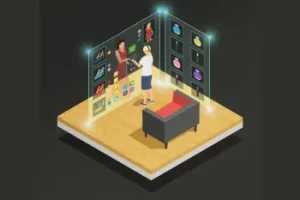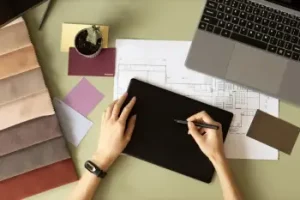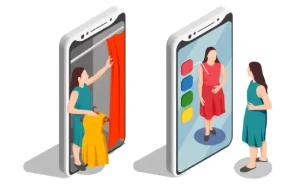Modern fashion designers must blend creativity with technology, making tools like CAD and AR/VR integral to their learning and workflow.
Computer-Aided Design enables faster design creation, reduces errors, and enhances output quality—becoming a cornerstone of fashion education.
Students are increasingly expected to understand both traditional and digital printing methods to stay relevant and competitive.
Augmented and virtual reality let consumers try digital outfits before buying, making it a crucial technology for future fashion professionals.
Platforms like Instagram and TikTok impact consumer behavior, requiring designers to be digitally literate and trend-aware.

Technology has become an integral part of every profession, including a creative one like fashion design. Thus, being merely creative doesn’t suffice for a contemporary fashion designer. They must develop techno-creative skills that help them blend technological abilities with creative capabilities to deliver quicker and better products.
But that’s not it. Technology has penetrated fashion sales, marketing, and branding as well, thus making it an inseparable and significant part of the global fashion ecosystem. The growth of technology in fashion has impacted fashion design courses as well. Let’s examine a few technologies imperative for students to be well-versed with.

The use of technology refers to a competitive advantage that helps fashion designers enhance finesse and deliver designs and make revisions quickly. Unlike the yesteryears when everything was manual and time-consuming, today, most aspects of the fashion industry have become technology-driven and quick. Here are a few widely used technologies in the fashion design profession.

CAD is one of the most crucial skills that fashion design students should possess. CAD allows students to see and compare traditional fabrics and use various design techniques. While saving time, it also helps minimize the chances of errors. Besides, it reduces the need for and the effort involved in manual sketching, pattern-making, flat drawing, etc. Along with saving time, CAD helps increase the design output, allowing students to experiment with colors and create complex designs.
Social media isn’t merely a medium to connect with people anymore. It has become a business playground where businesses compete and leverage the space through content and influencers to drive people’s preferences and buying decisions. Fashion design institutes and colleges must continuously communicate with students to shape more advanced and consumer-oriented designs.
3D printing is another significant area within the fashion design realm. Students should focus on the latest digital printing technology and the most recent developments within that space. But a little knowledge and understanding of traditional screen printing can also help and enhance the student’s overall comprehension of the fashion sector.

Consumers can now dress and see how they look in attire without physically wearing it! Yes. That’s possible with AR (Augmented Reality)/VR (Virtual Reality). These technologies have only begun their journey in the fashion world. But they’ve already created a lot of buzz. AR/VR offers enhanced customer experiences and expedites the buying decision-making process. Accordingly, this is another technology that fashion design students should be aware of.
Are you an aspiring fashion designer looking for a comprehensive fashion design course in Pune? Enroll in NIF Kothrud, one of the leading fashion design institutes in India. At NIFD, we help students stay abreast of the latest technologies and develop proficiency in various to make them even more competent designers.
Additionally, our continuously updated curriculum, experienced faculty members, celebrity mentors, exposure to various global and national fashion events, etc., add value to students’ careers and shape them into comprehensive fashion professionals.
NIF can help you set the road to success in the fashion design sector. Call us at +91 9205290939 to connect with our support team.
Technology boosts efficiency, creativity, and market relevance—helping students master modern tools that are critical in today’s fashion industry.
CAD (Computer-Aided Design) allows designers to digitally sketch, edit, and visualize garments, speeding up the design and production process.
3D printing enables the creation of complex, customized pieces with less material waste and faster turnaround time.
AR/VR technologies allow consumers to try on virtual clothes and improve their shopping experience, aiding decision-making and reducing returns.
Yes, leading institutes like NIF Kothrud have integrated CAD, digital printing, and AR/VR into their fashion design curriculum.
With over 25 years of experience in fashion, Sujit is someone who has seen the industry evolve. His experience spans working on multiple continents and expertise that extends to various areas, including Basic and Advanced Fashion Illustration, and proficiency in Fashion Portfolio Design (both manual and digital). As an industry veteran, Sujit’s contribution to NIF Global Pune Kothrud and its students is simply incomparable!
